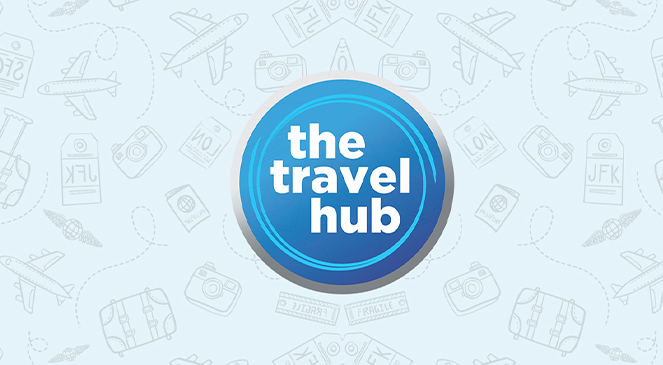Demand Side Platform for Advertisers: More Clicks, Less Cost!
Wednesday, 19 February 2025 | India
In today’s digital advertising landscape, efficiency and cost-effectiveness are key. Advertisers are constantly looking for ways to optimize ad placements while reducing expenses. This is where Demand Side Platforms (DSPs) come in, revolutionizing how advertisers purchase and manage ad inventory. With DSP Advertising, businesses can access real-time bidding (RTB), programmatic buying, and extensive audience targeting, all while optimizing costs.
In this article, we will dive deep into DSP Advertising, how it works, its benefits, and how you can leverage Programmatic Display and Programmatic Ad Platforms to drive more clicks for less cost.
What is a Demand Side Platform (DSP)?
A Demand Side Platform (DSP) is an automated software that allows advertisers to buy digital ad space across multiple networks in real-time. By using AI-driven technology, DSPs enable precise targeting and budget optimization, making ad buying more efficient.
How Does a DSP Work?
- Advertisers Set Campaign Goals – Advertisers input their budget, audience preferences, and campaign objectives into the DSP.
- Real-Time Bidding (RTB) – The DSP bids on ad spaces in milliseconds across multiple networks.
- Ad Placement & Optimization – Winning bids result in immediate ad placements, with AI optimizing for engagement and cost-effectiveness.
- Performance Analysis – The DSP collects real-time data to optimize future ad performance.
Key Components of a DSP
- Audience Targeting – Enables advertisers to target users based on demographics, behavior, and interests.
- Bid Management – Automates bidding in real-time to secure the best-priced ad placements.
- Ad Inventory Access – Provides access to a vast range of publishers and ad exchanges.
- Analytics & Optimization – Uses AI-driven insights to enhance campaign performance.
Why Advertisers Need a DSP
Traditional ad buying can be complex and time-consuming. A DSP Advertising solution simplifies the process by automating bidding and optimization. Here’s why advertisers should consider a DSP:
Cost-Effectiveness
- Lower Cost Per Click (CPC) – DSPs enable real-time optimization, reducing CPC and Cost Per Impression (CPM).
- Budget Flexibility – Advertisers can set daily or lifetime budgets, ensuring optimal spend.
Advanced Targeting Capabilities
- Demographic Targeting – Age, gender, income, location-based targeting.
- Behavioral Targeting – Interests, browsing history, and online behavior.
- Lookalike Audiences – Finding users similar to existing customers.
Real-Time Analytics & Reporting
- DSPs provide detailed insights into ad performance, helping advertisers refine their strategies.
- AI-driven optimization ensures continuous campaign improvement.
Access to Premium Inventory
- Programmatic Ad Platforms connect advertisers to high-quality ad spaces across multiple publishers.
- Advertisers can reach their audience on top-tier websites and mobile apps.
The Role of DSPs in Programmatic Advertising
Programmatic Advertising is the automated buying and selling of digital ads. DSPs play a crucial role in this ecosystem by facilitating real-time transactions and maximizing ad efficiency.
How DSPs Fit into Programmatic Display
- Automated Bidding: Bids for ad space occur in milliseconds, optimizing budget usage.
- Data-Driven Decisions: Uses AI and machine learning to target the right audience at the right time.
- Cross-Channel Advertising: Supports display ads, video ads, mobile ads, and social media ads.
Types of Programmatic Ad Buying
- Real-Time Bidding (RTB) – Open auction system where the highest bid wins.
- Private Marketplace (PMP) – Exclusive, invitation-only auctions for premium ad inventory.
- Programmatic Guaranteed – Direct deals with publishers at fixed prices.
Best Practices for Running Successful DSP Advertising Campaigns
To maximize success with DSP Advertising, follow these best practices:
Define Clear Objectives
- Set measurable goals (e.g., increase brand awareness, generate leads, drive sales).
- Align campaign KPIs with business objectives.
Optimize Audience Targeting
- Use first-party data for precise targeting.
- Leverage lookalike audiences to expand reach.
Use A/B Testing
- Test different creatives, headlines, and CTAs to find the best-performing ads.
- Analyze results and optimize campaigns accordingly.
Leverage AI & Machine Learning
- Utilize AI-driven insights for bid optimization.
- Adjust strategies based on real-time data.
Monitor & Adjust in Real-Time
- Regularly review campaign performance and make necessary adjustments.
- Use analytics tools to track ROI.
<<<"Smarter Ads, Better Results – Advertise Now!">>>
Conclusion
A Demand Side Platform is a game-changer for advertisers looking to optimize ad spend and drive better results. With DSP Advertising, businesses can harness Programmatic Display and Programmatic Ad Platforms to gain more clicks at a lower cost. By leveraging AI, real-time bidding, and advanced targeting, advertisers can maximize efficiency and ROI. As digital advertising continues to evolve, DSPs will remain essential tools for cost-effective and impactful marketing strategies.
Frequently Asked Questions (FAQs)
What is the main advantage of using a DSP?
Ans: The biggest advantage of a DSP is its ability to automate ad buying, optimize costs, and precisely target audiences through real-time bidding.
How does a DSP differ from an ad network?
Ans: While an ad network aggregates and sells inventory from publishers, a DSP allows advertisers to directly purchase and manage ad placements across multiple networks in real time.
Is a DSP suitable for small businesses?
Ans: Yes! Many DSPs offer scalable solutions, making them accessible to businesses of all sizes.
Can DSPs be used for multiple ad formats?
Ans: Absolutely! DSPs support various formats, including display, video, mobile, and native ads, ensuring versatility in advertising strategies.
Related Articles
articles that we think you will love
DumpsBoss NCSC-Level-1 Study Guide for Surefire Exam Pass
Tuesday, 31 December 2024
DumpsBoss NCM-MCI Exam Dumps Confidence Through Preparation
Tuesday, 31 December 2024
Join the Conversation
Be part of the community Discussion







